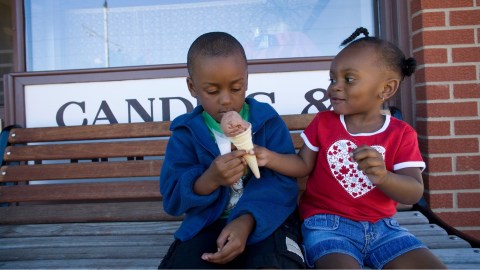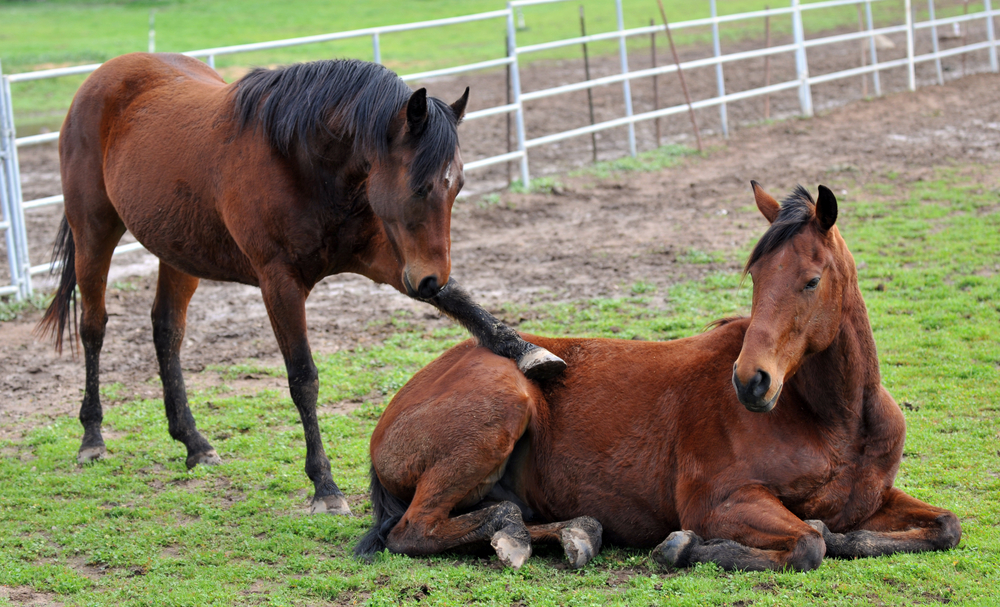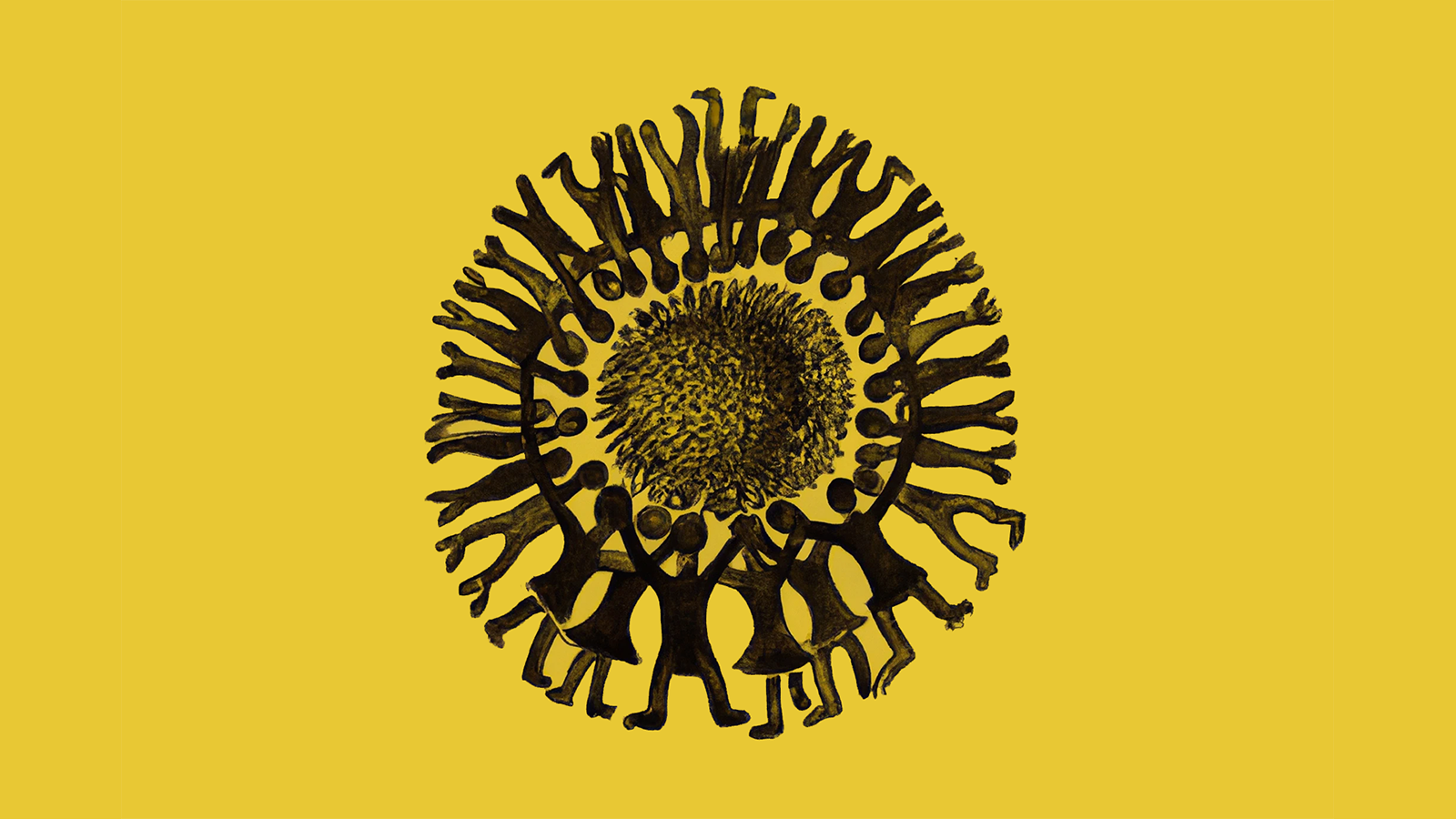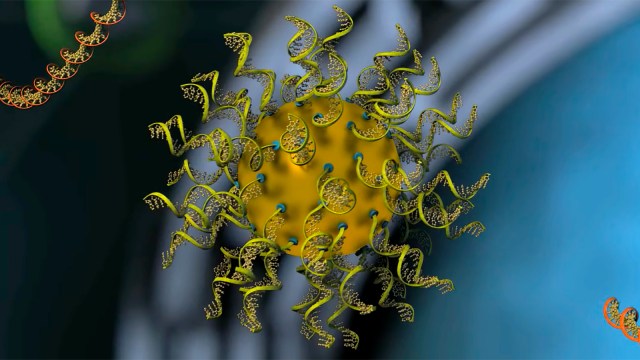5 strategies for giving more (without being taken advantage of)

- Popular perception is that givers lack the qualities necessary to succeed.
- While givers can fall behind, they also represent many top performers across industries.
- Here are five strategies to help you find the balance between giving and taking.
Like Aesop’s Fables or Grimm’s Fairy Tales before it, Shel Silverstein’s The Giving Tree is as a dark tale that serves as a warning for children. The story centers on the relationship between a Boy and a Tree. The Tree desires nothing more than to make the Boy happy, and so she gives him whatever he wants. At various stages of his life, she offers him her fruit to sell, her branches to build a home, her trunk to carve a boat, and, when she is nothing more than a stump, herself as a place for him to rest.
The moral of the story is clear: Giving is a sucker’s game. Better to be the taker and get what you want. It’s a lesson many seem to carry into adulthood. Consider the qualities commonly perceived to drive success. Are they kindness, generosity, and compassion? Nope. Successful people are viewed as savvy, ambitious, results-driven, and on a mission to own all the apples. And there’s some truth to that.
In his book Give and Take, psychologist Adam Grant points to research showing that givers can fall behind. He cites a study looking at California engineers that found habitual givers were less productive, made more errors, and missed more deadlines than their peers.
“Across occupations, it appears that givers are just too caring, too trusting, and too willing to sacrifice their own interests for the benefit of others. There’s even evidence that compared with takers, on average, givers earn 14 percent less money, have twice the risk of becoming victims of crimes, and are judged as 22 percent less powerful and dominant,” Grant writes.
Yet, takers didn’t climb to the top of the success ladder either. Grant’s research found that top performers are givers as well. The difference was in the giving strategies they employed. Here are five such strategies:
1. Shift your style when appropriate
Grant identifies three reciprocity styles: givers, takers, and matchers. Givers and takers are exactly what they sound like. The former are Trees. They help when the outcomes benefit others, even if it costs them personally. The latter are Boys. They will help others, but they will contribute as little as possible while trying to reap as much for themselves.
“These preferences aren’t about money,” Grant writes. “[G]ivers and takers aren’t distinguished by how much they donate to charity or the compensation that they command from their employers. Rather, givers and takers differ in their attitudes and actions toward other people.”
The third type, matchers, view reciprocity as a equivalent exchange. If you buy this round of drinks, the next one is on them. If you help them with a project this week, you can bet they’ll assist you next week. And they expect the same tit for tat from you.
Grant points out that people will adopt a primary style, especially at work; however, there are times when shifting your style may be appropriate. In salary negotiations, for example, you’ll want to err on the side of the taker. Conversely, when it comes to close friendships, it’s better to be a giver and not keep a tally the relational transactions.
How do you make that shift? It depends on your style and the situation. Grant recommends that takers focus on giving in ways they enjoy. That way, the act feels self-rewarding. Meanwhile, matchers can make an effort to pay it forward while consciously forgoing the expectation of a returned favor.

2. Learn to recognize and manage takers
In an interview, Grand shared two ways to spot the takers in your office. First, they tend to use personal pronouns, such as “I” and “me,” when discussing accomplishments, even if the results were a team effort. Second, takers are prone to “kissing up and kicking down.” That is, they will flatter people above them in the organizational hierarchy while treating their peers and subordinates poorly.
While its naturally to want to call out workplace takers, Grant advises a subtler approach: Simply dial down your donations or politely ask the taker to help yourself or someone else.
When asking for help, focus on those areas you know the taker enjoys or is skilled in. Like everyone else, takers want to share their expertise and passions, so these requests feel rewarding for them. Finally, if you are a leader in your organization, it’s up to you to set the tone. Building a culture of teamwork, accountability, and shared success goes a long way in curbing such Boy-ish behaviors in the workplace.
3. Use the 5-minute favor
What separates top-performing givers from those at the bottom? The answer is that some givers give too much and become overburdened, burned out, and taken advantage of. Conversely, top-performing givers give when it is appropriate but are careful to not overextend themselves.
“There’s a group of very generous people that I would consider selfless or purely altruistic who constantly put other people ahead of themselves and end up sacrificing their own interests along the way,” Grant said in the interview. “And those are the givers, who, a lot of evidence shows, are at risk for burning out and being taken advantage of.”
To help these givers strike a balance — and to help takers and matchers give more — Grant recommends experimenting with what he calls 5-minute favors. These are small acts of giving that aren’t too costly for the giver — a couple minutes here, a cup of coffee there, and a little bit of knowledge when appropriate.
Because such favors aren’t extravagant, selfless givers may consider it insufficient. But research shows that givers chronically underestimate the value of small kindnesses.
For example, in a study published in the Journal of Experimental Psychology, researchers asked participants if they wanted to receive or give away a free cup of hot chocolate. If the participants choose to give it away, the researchers also asked them to rate how appreciative they thought the recipient would be. The scale was from -5 (very negative) or 5 (very positive).
The participants believed their kindness would make the recipient a little happy (2.72 on average). But the recipients reported happiness a full level above that (3.52). Other studies have shown similar results.
“Performers are not fully taking into account that their warm acts provide value from the act itself,” Amit Kumar, the study’s lead author and a professor of marketing, said in a release. “The fact that you’re being nice to others adds a lot of value beyond whatever the thing is.”
I think a lot of people stereotype generous and helpful people as pushovers, as weak, as not tough and driven enough to be successful. And I think that is a myth that we need to break down.
– Adam Grant
4. Just do it
While small favors may have larger effects, some would-be givers can still hold back. They worry that their outreach may cross an invisible social line that leads to unintended consequences. For example, the recipient may feel insulted, embarrassed, or view the offer as suspicious. But research suggests such fears are entirely unfounded.
In 2021, BBC Radio 4 and psychologists at the University of Sussex launched the Kindness Test — a study designed to discover how people viewed kindness. After surveying more than 60,000 people across 144 countries, it found that people feared a random act of kindness would be misinterpreted. However, fewer than 1 percent of respondents said they would be insulted or embarrassed. Most said such acts would make them happy and grateful.
Additionally, a quarter of people believed their kindness would be perceived as a weakness, but this worry was similarly misplaced. “After giving an act of kindness people not only feel more connected to others and happier, but they said it helps them to feel as though they are a good person and adds meaning to their lives,” Claudia Hammond wrote for the BBC.
5. Be open to generosity in all forms
Giving isn’t only a matter of doing for others. When we give, we help ourselves as well.
One study gave participants money and then a choice: spend the money on themselves or spend it on others. The participants who spent it on others reported happiness levels that lasted longer than those who spent it on themselves. Research has also shown that volunteering boosts health and that prosocial behaviors release neurochemicals like oxytocin — the so-called “helper’s high.”
“So is [giving] selfish or selfless? Well, it’s neither and both, it’s self-full,” psychologist Tal Ben-Shahar said in an interview. “Self-fullness synthesizes the best of both worlds, giving oneself and giving others. And they work together, reinforcing one another in an upward spiral of generosity and benevolence.”
At the same time, when we let others give to us, we provide them the opportunity to gain those “self-full” neuro-blessings while receiving help ourselves. This builds relationships of give-and-take that increase well-being and success for all involved. Our helpers’ successes become our own; our successes become theirs.
“When [givers] win, people are rooting for them and supporting them, rather than gunning for them. Givers succeed in a way that creates a ripple effect, enhancing the success of people around them. You’ll see that the difference lies in how a giver’s success creates value, instead of just claiming it,” Grant said in an interview.
So despite the lessons learned in bedtime stories, taking isn’t always a selfish act, and giving won’t leave you a stump of yourself. It’s about finding the balance between the two — and maybe giving just a bit more than we take.
Learn more on Big Think+
With a diverse library of lessons from the world’s biggest thinkers, Big Think+ helps businesses get smarter, faster. To access Adam Grant and Tal Ben-Shahar’s full classes for your organization, request a demo.





